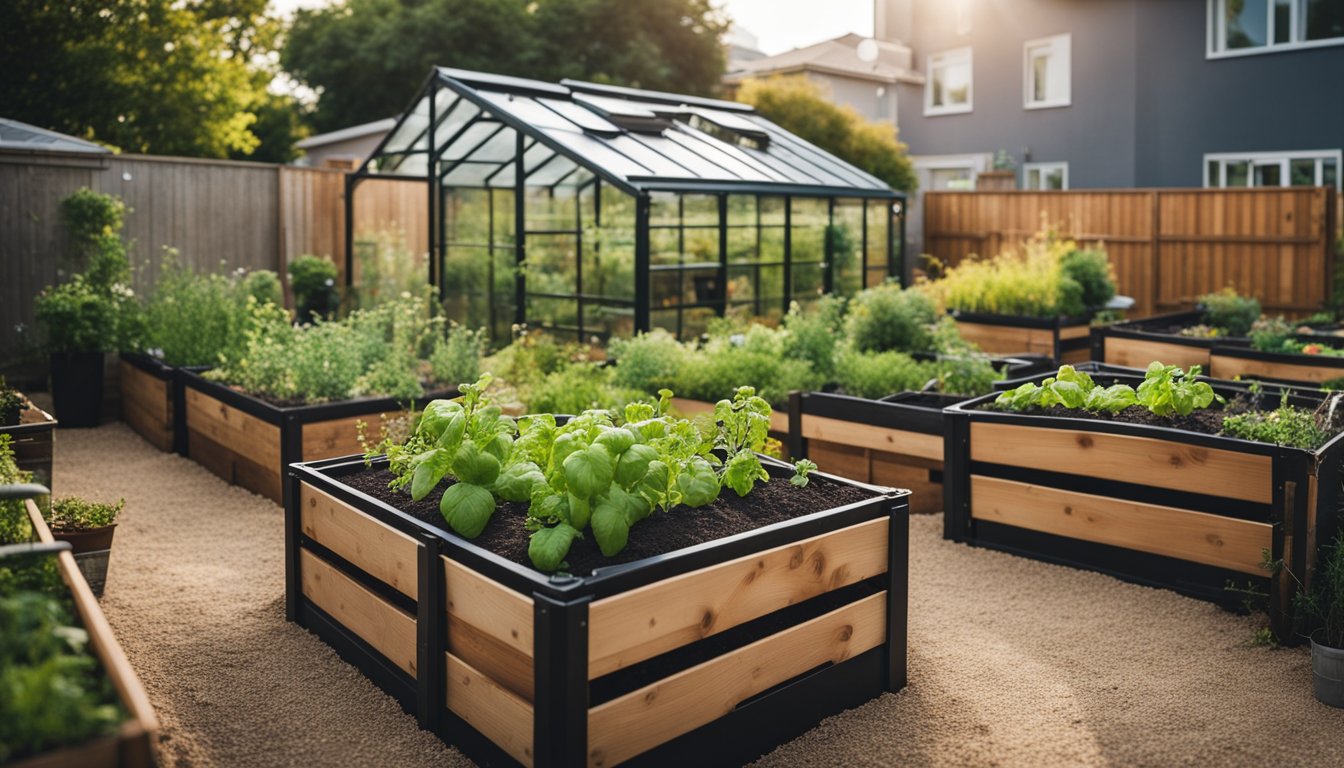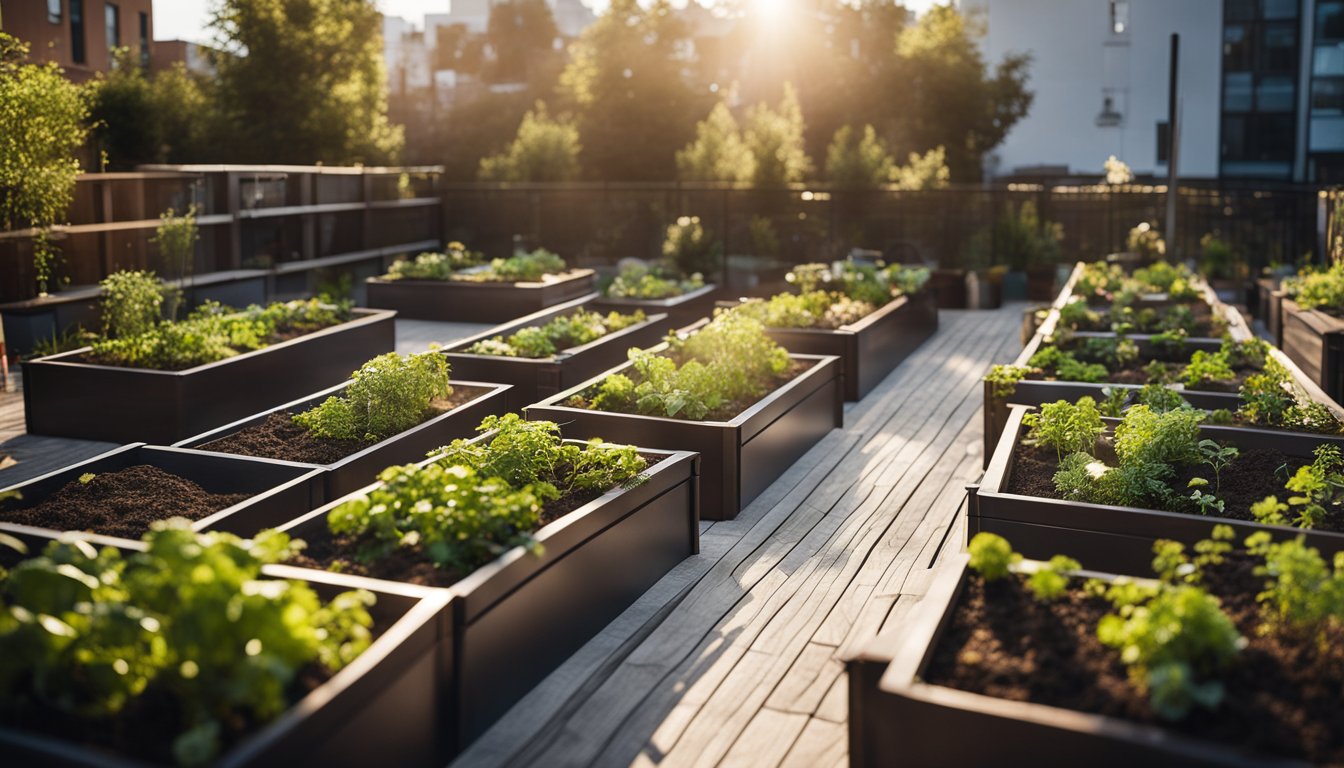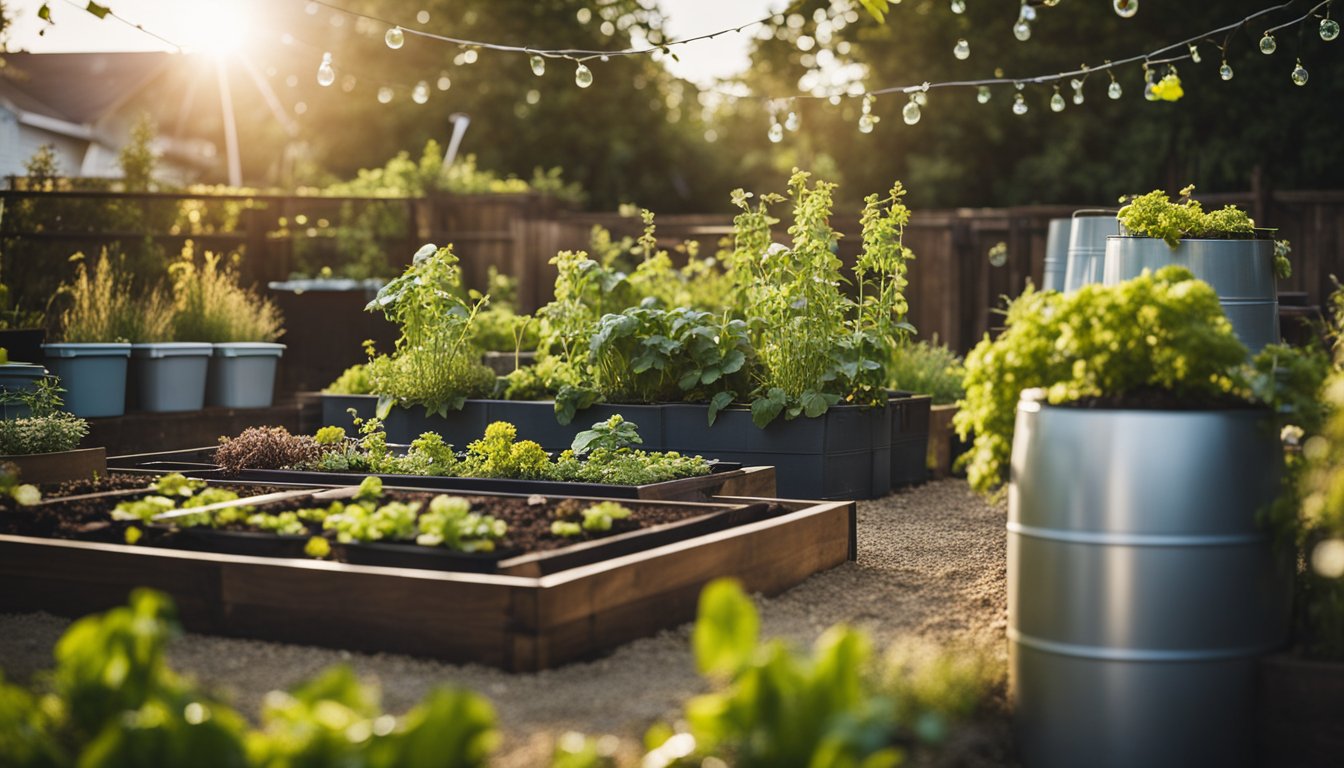Late updated: 26 Oct 2024 08:10
Written by: Daniel Harper
Sustainable Garden Design Ideas For Small Spaces: Maximising Greenery Efficiently
Navigating the world of sustainable garden design for small spaces can seem daunting, but it's a journey worth taking. In our increasingly urban environments, finding ways to incorporate greenery into small yards or even balconies is more essential than ever. Creating a sustainable garden maximises space while maintaining ecological balance, transforming even the smallest area into a vibrant, living oasis.

We often think of gardening as requiring a sprawling yard, yet innovative methods reveal endless possibilities for those of us working with tighter spaces. Vertical gardening, container planting, and the clever use of multi-functional plants allow us to cultivate biodiversity right outside our doors. Sustainable design doesn't just preserve resources and reduce waste; it also offers a personal sanctuary filled with nature's beauty.
Our approach focuses not only on aesthetics but also on the environmental impact. By using locally-sourced materials and promoting biodiversity, small gardens become significant contributors to sustainability. Let us explore how thoughtful design choices can create spaces that are not only beautiful but also beneficial to the planet.
Key Takeaways
- Sustainable gardens transform small spaces into ecological havens.
- Using vertical gardening and multi-functional plants maximises limited areas.
- Thoughtful design enhances aesthetics and encourages biodiversity.
Fundamentals of Sustainable Garden Design
In small garden spaces, sustainable design focuses on making the most of available resources. Efficient use of vertical spaces and choosing the right plant varieties can significantly enhance biodiversity while reducing the garden's carbon footprint.
Understanding Your Microclimate
Before creating a sustainable garden, we must first understand our garden's microclimate. This refers to the unique weather conditions affecting our space, such as sunlight, wind patterns, and soil type.
Identifying these characteristics allows us to tailor plant choices and design elements to thrive under specific conditions. For example, a south-facing balcony might get plenty of sunlight, making it suitable for sun-loving plants, whereas shaded areas may benefit from shade-tolerant varieties. Recognising existing water sources and drainage patterns is crucial for effective water management, reducing dependency on external water supplies. Through these steps, we create a thriving, eco-friendly space tailored to our environmental conditions.
Utilising Vertical Space Efficiently
In small gardens, vertical space is a valuable asset. We can maximise it by incorporating green walls or trellises, transforming plain walls into lush vertical gardens. Climbing plants are excellent for this purpose, providing green coverage without occupying valuable ground space.
Vertical gardening techniques allow us to grow a wider variety of plants, enhancing biodiversity and supporting urban wildlife. Additionally, incorporating vertical structures can support pollinator-friendly plants, inviting beneficial insects. These structures also improve air quality and can insulate buildings, reducing the carbon footprint. By using vertical spaces creatively, we optimise environmental benefits while crafting a visually stunning garden.
Choosing the Right Plant Varieties
Selecting appropriate plant varieties is key to a sustainable garden design. We should focus on native, drought-tolerant, and pollinator-friendly plants. Native plants offer several advantages, including suitability to our local climate and resilience against pests. They also require less water and maintenance, contributing to reduced resource use.
Drought-tolerant species are important for conserving water, particularly in areas prone to irregular rainfall. They ensure our garden remains lush and green, even during dry spells. Furthermore, introducing pollinator-friendly plants supports local ecosystems by attracting bees, butterflies, and other beneficial insects. This choice enhances biodiversity and promotes a healthy environment. By carefully choosing these plant varieties, our garden can flourish sustainably.
Innovative Techniques and Enhancements

Transforming small spaces into sustainable gardens involves smart design and strategic techniques. By making use of composting, creating pollinator habitats, and integrating aesthetic features, we can maximise space while enhancing functionality and natural beauty.
Incorporating Organic Waste with Composting
Composting is an effective way to enrich soil and reduce waste. By turning organic kitchen scraps into nutrient-rich compost, we enhance soil fertility naturally. Finding a spot for a compost bin or pile is crucial, even in small gardens.
Layering green materials like vegetable scraps and coffee grounds with brown materials such as dry leaves creates balance. Regularly turning the compost ensures aeration and speeds up the decomposition process. This not only enriches the garden but also supports eco-friendly practices by minimising waste.
Creating Habitats for Pollinators
Supporting biodiversity by creating pollinator habitats is vital for a thriving garden. We can attract bees, butterflies, and other pollinators by selecting scented plants and flowers. Using companion planting can provide continuous blooming, attracting pollinators throughout the seasons.
Strategically planting flowers like lavender or mint offers not just beauty but also serves as a magnet for pollinators. Integrating these into raised beds or hanging baskets can make efficient use of vertical space. This approach supports both plant health and ecosystem services, encouraging a diverse and resilient environment.
Adding Aesthetic and Functional Elements
Incorporating aesthetic and functional elements elevates the garden experience. Fairy lights and focal points add visual interest and charm. Water features, even small ones, can provide soothing sounds and act as a focus.
Application of permeable surfaces and efficient filtration help manage rainwater sustainably. Edible landscaping, such as including herb plants in a shade garden, not only offers culinary benefits but also enhances visual appeal. Additionally, using hardscape materials can define spaces and add texture, ensuring the garden is both beautiful and practical. By balancing functionality with aesthetics, we create a unique, sustainable haven in even the smallest of spaces.
Frequently Asked Questions

Creating a sustainable garden in a small space requires thoughtful plant selection, efficient use of space, and cost-effective strategies. These questions address common concerns and provide practical solutions for cultivating an eco-friendly oasis at home.
How can one build a low-maintenance garden in a limited space?
Begin by selecting native plants accustomed to your local climate; they typically require less care and water. Utilise self-watering containers and focus on shrubs or perennials to reduce the need for frequent replanting.
Which plants are most suitable for a compact sustainable garden?
Opt for small, versatile plants like herbs, lettuce, or dwarf fruit trees, which suit limited areas. These plants offer productivity and encourage biodiversity without overwhelming the space.
What are the best strategies for creating a budget-friendly eco-conscious garden at home?
Repurpose materials for planters, such as old containers or wooden pallets. Use homemade compost to enrich soil naturally, and explore local seed exchanges to reduce costs.
How can you maximise the use of space in a small garden for sustainability?
Vertical gardening expands planting areas without requiring additional ground space. Wall-mounted planters or trellises allow climbing plants to flourish, optimising available sunlight.
What are some effective ideas for landscaping a small garden sustainably?
Incorporate rainwater harvesting systems to conserve water use, and focus on using local, reclaimed materials for hardscaping. Mulching helps retain soil moisture and reduce the need for frequent watering.
How can a small garden be designed with modern sustainability principles in mind?
Embrace permaculture principles, integrating plant diversity and resource recycling for a closed-loop system. Enhance pollinator habitats by introducing flowering plants, fostering a symbiotic environment for insects.
